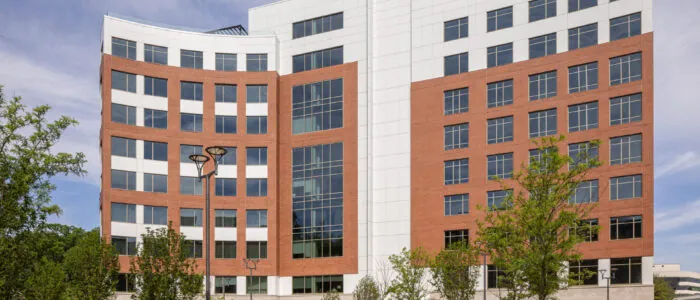‘hit The First Year Hard’: Inside Lease-up Strategies Of Benchmark, Lcs, Mather, The Springs Living

Achieving strong lease-up before and after a community opens is critical for setting the stage for a new project reaching stabilization – and not an easy feat.
Operators must contend with local market competition, sometimes within new markets; balance sales and marketing tactics to raise brand awareness; and leverage seemingly every department involved in community operations to net strong lease up.
It’s no secret that a community’s first year is important – according to a recent report from NIC MAP Vision, that time is “decisive in setting the trajectory” toward long-term stabilization and future operating performance. Data shows that occupancy gains tend to level off after the first year of operations, and newer communities with stronger lease-up momentum in the initial year, and with strong pre-leasing prior to opening, are better positioned to capitalize on growing senior living demand.
Senior living operators including Benchmark Senior Living, Life Care Services (LCS), Mather and The Springs Living all recently opened new developments aiming to capture incoming demand. All have focused on lease-up in those communities by closely tracking expenses, refining sales and marketing strategies in new markets, along with the importance of establishing connections between sales staff and broader operations to drive move-ins.
“To hit the performance numbers for our new construction communities, you have to have a great first year,” LCS Chief Marketing Officer Rick Westermann told Senior Housing News. “You can’t save your way to that end pro forma number, you have to drive revenue,”
Hitting the ground running in pre-leasing, first-year goals
Senior living communities that are built within the last four years have the advantage of a growing demand-supply imbalance. Recent NIC data shows that occupancy continues to grow across the industry, which pushed occupancy up to 86.5% in the third quarter of 2024.
For independent living and assisted living properties, NIC data in the third quarter showed an “ongoing decline” in the number of new units under construction back to levels last seen in 2014. Also in the third quarter, NIC data shows the number of new units breaking ground annually has fallen below the number of new units opening, a trend that last occurred in 2021 and 2009 due to the Covid-19 pandemic and global financial crisis, respectively.
LCS in 2023 opened Broadview at Purchase College, a community located on the campus of Purchase College in New York; and The Delaney at The Green in Florham Park, New Jersey. In the first year of opening Delaney at The Green, LCS averaged 10 move-ins per month at rates that significantly exceeded underwriting for the project, generating a positive margin while the community was at 50% occupancy, according to Westermann
“You have to hit the first year hard and we can dial in a lot of different areas as we move to hit 85% to 95% to stabilize a new development,” Westermann said.
Westermann compared the first year a community is open to a high-performing college or professional football team with head coaches that promote buy-in from players. In this case, the playing field is reaching new customers and the players are an elite mix of competent, well-trained staff.
“You need the department heads all there and engaged and asking questions and within a culture you have to have a new community’s executive director to drive a culture of execution and confidence to ensure the team is driving towards that goal,” Westermann added.
Runway of 18 months
Waltham, Massachusetts-based Benchmark Senior Living earlier this year in May opened in a new market in Alexandria, Virginia with the 10-story, 115-unit Benchmark at Alexandria assisted living and memory care community, representing some new territory for the operator based in New England. Benchmark typically forecasts pre-leasing and lease-up to stabilization in 18 months, and if it exceeds that timeframe, operators incur operating losses.
“You want to try and be as accurate as you can and beat the budget or hit your budget so that you don’t incur overages in your development budget which can be substantial depending on how much longer it takes to fill your community,” said CEO Tom Grape. “You always want to get anything off to a good start and establish a solid reputation for the community in the market.”
Grape noted that Benchmark took an aggressive approach in marketing its new community in Alexandria, Virginia, to raise the company’s brand awareness with potential customers. That included leveraging third-party referrals, connecting with established organizations that support older adults.
Grape also emphasized the importance of department heads and staff creating a welcoming atmosphere for prospects and their families to recreate the feel a new community will hold.
“We’re trying to host events so people can come and see and feel what the building will look like and we’ll be continuing with social media and local advertising but once a building opens up, getting people to the building is a key thing so they can experience it,” Grape added.
Grape said the community in Virginia is currently “on track” with lease-up goals seven months after it opened. He also referenced one of the company’s other new developments in Hanover, Massachusetts, a 90-unit assisted living and memory care property, that demonstrated strong lease up in the first year “well-ahead of budget.” Grape called the lease-up journey for the Hanover property a “home run” with the Benchmark at Alexandria aiming for a similar success journey.
Even before the first year lease up, operators can set the stage for strong operating performance through aggressive pre-leasing strategies, connecting marketing campaigns with older adults in a community’s local area to drive awareness and get the ball rolling on occupancy growth.
Last month, McMinnville, Oregon-based provider The Springs Living opened a waterfront property, The Springs at the Waterfront in Vancouver, Washington. The 12-story, 360,000 square-foot property includes 250 units for older adults spanning independent living, assisted living and memory care.
The Springs Living CEO Fee Stubblefield told Senior Housing News the community was unlike any previous project undertaken by the company with a high-rise urban format in a market described by the company’s leader as being suburban. The Springs Living has been able to attract a younger cohort of residents in the sought-after baby boomer generation in pre-leasing.
“We’re seeing a lot more people being proactive and planning but we’ve been cultivating these long lead times to get people to [move-in],” Stubblefield said. “We started over two years before we opened our doors building relationships and finding that core group of people—they want to live life and there’s a lot of things that we got right in the community that gives them a sense of that.”
Open less than a month, The Springs at the Waterfront is projected to hit 20% occupancy heading into 2025 with the progression “going right” on schedule, Stubblefield noted. The new community also offers large unit layouts, something sought by baby boomers downsizing from single-family homes to move into an urban environment, with emphasis on amenity offerings and common spaces, Stubblefield said.
Delivering on selling points, aligning sales staff with other departments to prevent over-selling or over-committing, is crucial for a new community to hit its marks in the first year, Stubblefield said.
He likened a bad first year lease up in senior living to a restaurant that recently opened that resulted in multiple incidents of foodborne illness.
“It spreads like wildfire,” Stubblefield said of a problematic first year. “You can’t escape that and you need to have the nuclear option to almost turn around that reputation, and it takes a long time to turn around.”
Aligning sales, marketing and operations to succeed in first year growth
Life plan communities, which structure resident deposits with higher entry fees, require intensive pre-leasing sales efforts, sometimes multiple years before a community’s opening. LCS’ Broadview at Purchase College community was able to go from zero occupancy to over 200 residents and full occupancy in the first year driven by strong pre-leasing sales and marketing efforts. Life plan communities typically rely on initial partial deposits before reaping entry fee revenue upon move in.
Mather’s life plan community in Tysons, Virginia, had a five-year period of pre-sales, a timeline that was extended by the impacts of the Covid-19 pandemic. In May, Mather had pre-sold 90% of homes at The Mather, according to sales data shared with SHN. Three-quarters of depositors were from the baby boomer and Generation X demographic cohorts.
“It was so very important that their first tangible experience reflected everything that took place prior to opening,” Mather Senior Vice President of Sales Gale Morgan told SHN. “You must always paint realistic expectations and then you must deliver on those but it comes into the sales and marketing teams for the first several years but it’s critical to blend those visions with the operations team so everyone has a similar expectation of the services that will be delivered.”
The $500 million development spans 27 stories in two highrise concepts within a broader master-planned area. It opened in two phases, with one highrise opening in March and the other in September.
Mather Chief Experience Officer Brenda Schreiber said it’s “critical” for operations to align with sales and marketing efforts. With an extended timeline for move-ins due to the multi-phase opening, Schreiber said it’s important for operators to share experiences with prospects to understand the amenity and programming offerings a new community will bring as they prepare for a major transitional period in their lives.
Mather leveraged its culinary team to meet with 200 future residents to drive culinary offerings, with a similar effort also undertaken by the community’s creative arts and programming team, along with health services care staff, to make the move-in process more tangible.
“We knew it was important for them to experience the services, so we had them come in for fitness classes, art classes, informational seminars, happy hours and meals to truly meet their future operations team,” Schreiber added.
At Benchmark’s recently opened communities in Hanover and Alexandria, Grape said regardless of having a shiny new, state-of-the-art development in their portfolio, what drives first year success comes down to operations communicating as one, to curate unique move-in experiences for new prospects.
“Ultimately, what people are buying is the experience provided by our staff and we want to make sure that people experience when they come in for a tour is what they’re really buying and what sets us apart is the experience our staff provides,” Grape said.
That “whole house participation” in the sales process helps communicate the value a new community can bring a prospective resident. That means clearly defining care offerings and popular amenities like dining and culinary offerings in order to connect with prospects and drive strong first year trends, according to Westermann.
“That execution builds a reputation where those residents can see it and they’re experiencing it for the first time,” Westermann said.
- Benchmark Senior Living Benchmark Senior LivingThe Benchmark at Alexandrea
- Life Care Services (LCS) Benchmark Senior LivingThe Delaney At The Green
- Mather Benchmark Senior LivingThe Mather
- Moris Moreno / The Springs Living Benchmark Senior LivingThe Springs at The Waterfront
The post ‘Hit the First Year Hard’: Inside Lease-Up Strategies of Benchmark, LCS, Mather, The Springs Living appeared first on Senior Housing News.


